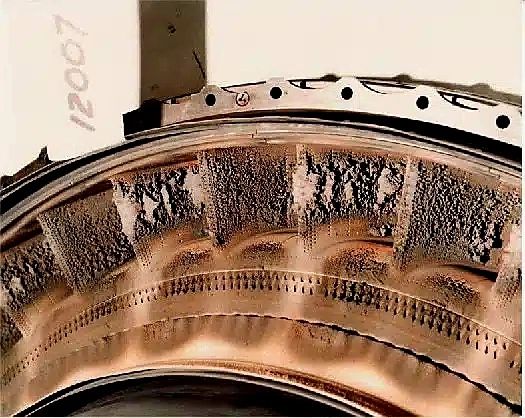In the aviation realm, the presence of volcanic ash poses a significant technical challenge. Understanding the detailed processes of erosion, accumulation, and crystallization of materials is crucial, particularly in their interaction with aircraft systems, notably turbines.
Volcanic ash, comprised of minute glass particles, pulverized rock, and silicates, acts as aggressive abrasive agents. As these particles infiltrate the turbine air intakes, progressive erosion of compressor blades and turbine vanes occurs.
Beyond erosion, the critical phenomenon lies in the accumulation of ash in the turbine’s hot sections. Silicates present in the ash, with a fusion point around 1110°C, lead to the formation of glass-like substances on cooler turbine surfaces. This crystallization compromises engine efficiency, heightening the risk of stall or flameout.
Mitigation strategies are essential to tackle these challenges. It’s recommended that flight crews throttle down to idle upon encountering volcanic ash, mitigating the risk of turbine accumulation. Additionally, preventative maintenance and thorough inspection of aircraft systems are crucial to detecting damages and ensuring operational safety.
As aviation continues to grapple with volcanic ash challenges, research and development of more robust materials and advanced detection systems play pivotal roles in aircraft protection and passenger safety. Collaboration among engineers, aircraft manufacturers, and regulators is vital to address this continually evolving challenge.
The impact of volcanic ash on aircraft turbines is a complex problem demanding a multidisciplinary approach and innovative solutions. With a profound understanding of the involved processes and a commitment to safety, the aviation industry can confront these challenges and continue to fly with confidence in the skies.
References:
Mendonça, F. A. C. (2011). Cinzas vulcânicas e a segurança de voo. Revista Conexão SIPAER, 3(1), 77. ISSN 2176-7777.





